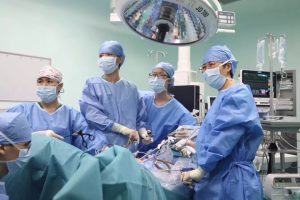Understanding the most common sources of bacterial contamination in surgical patients, and taking appropriate precautions, are key to protecting patients from infection. This article will introduce the most common sources of bacterial contamination in surgical patients and preventive measures to help you strengthen your awareness of infection control and ensure the safety of surgical patients.Infection in surgical patients is one of the major challenges facing the medical field. Understanding the most common sources of bacterial contamination in surgical patients is critical to prevent infection. This article will discuss from the aspects of surgical patients' own bacteria, bacteria in the medical environment, bacteria in the medical staff, and bacteria in the surrounding environment of patients. At the same time, it will provide prevention and control measures to help the medical team effectively prevent infection in surgical patients.

Surgical patient's own bacteria
Bacteria carried by surgical patients themselves is one of the most common sources of contamination. Bacteria may exist on the patient's skin surface, respiratory tract, digestive tract and other parts. Proper preparation and cleaning prior to surgery can reduce the spread of your own germs. The medical team should provide instructions to teach patients the proper cleansing methods to keep the skin and mucous membranes clean.
medical environment bacteria
Bacterial contamination in operating theaters and healthcare facilities is also an important source of infection in surgical patients. The operating room should be kept clean and disinfected, and infection control measures should be strictly implemented. Medical equipment and instruments should be cleaned and disinfected regularly to ensure sterility. In addition, medical staff should follow proper operating procedures to reduce the spread of germs.

medical staff bacteria
Medical staff could be potential spreaders of the bacteria. Unclean hands, improper use of gloves, masks and protective equipment, as well as carrying their own bacteria may lead to infection in surgical patients. Therefore, medical staff should undergo regular hand hygiene training, wear protective equipment correctly, and strictly follow infection control guidelines.
Bacteria in the patient's environment
There may be sources of bacterial contamination in the environment surrounding surgical patients, such as bed sheets, restrooms, doorknobs, etc. These bacteria may be transmitted to surgical patients through contact. Regular cleaning and disinfection of the patient's surroundings is a critical step in preventing infection.
Prevention and Control Measures
In order to effectively prevent infection in surgical patients, the medical team should take a series of prevention and control measures. This includes strengthening hand hygiene, correct use of disinfectants and cleaning procedures, keeping medical facilities and equipment clean and sterile, and rational use of antibiotics. Regular training and education to improve the awareness of infection control among medical staff and patients is an important part of effective infection prevention.
Understanding the most common sources of bacterial contamination in surgical patients and taking appropriate preventive measures are critical to reducing the risk of infection. Medical teams and patients should work together to enhance infection control awareness and implement effective preventive measures to protect the health and safety of surgical patients.